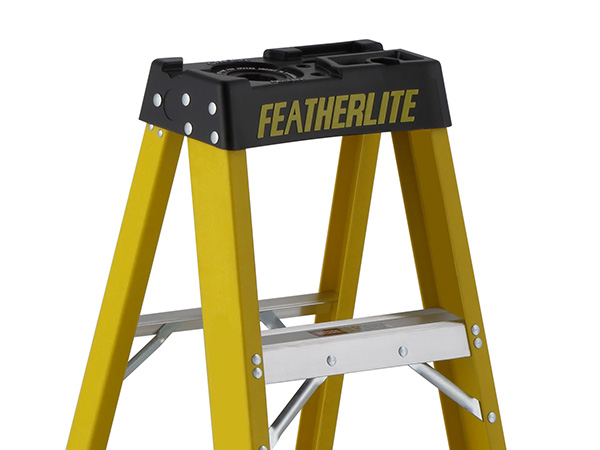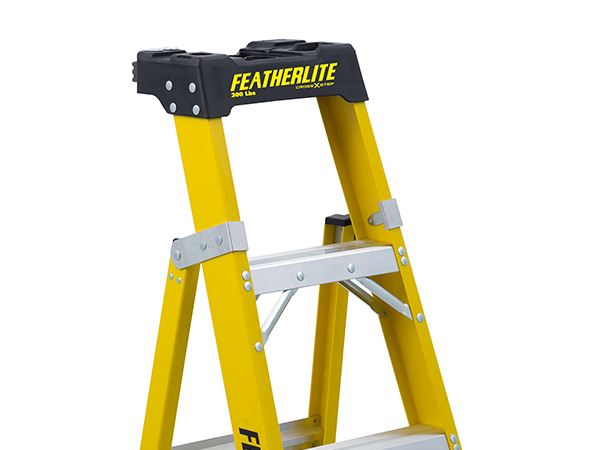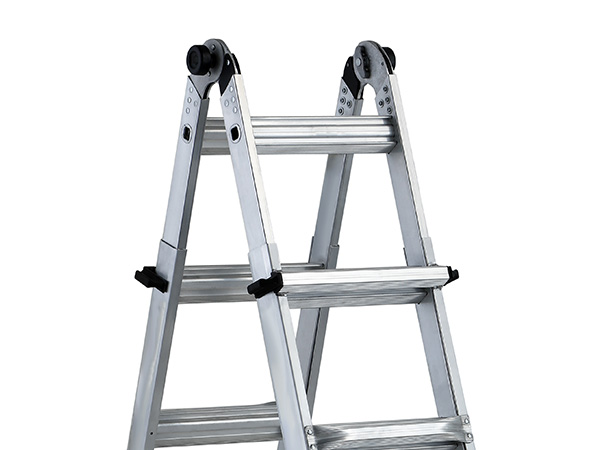For every job, there’s the right ladder.
This guide is designed to take you through the process of selecting the ideal ladder type, material, load capacity, and height to help you get the job done right.
At Featherlite Ladders, all of our products are designed and constructed to meet or exceed applicable standards and requirements of the American National Standards Institute (ANSI), the Occupational Safety and Health Administration (OSHA), and the Canadian Standards Association (CSA).
STEP 1
SELECT A LADDER TYPE
The type of ladder you need depends on the job. With different heights, rails, and configurations, the right ladder can make your task safer and easier to accomplish.
STEP 2
SELECT A MATERIAL
The next step in selecting your perfect ladder is choosing the right material. Aluminum ladders are cost-effective, light-weight, and quick & easy to transport. Fiberglass ladders can be heavier, but they’re stronger, more durable, and absolutely required when working around electricity because of the material’s non-conductive properties.
ALUMINUM
- Lightweight
- Long-lasting construction
- Resists corrosion
- Ideal for painting, roofing, and siding
Do NOT use aluminum ladders near electricity.
FIBERGLASS
- Non-conductive when clean and dry
- Strong and durable
- Weather-resistant
- Great for heavy-duty construction
Fiberglass ladders are REQUIRED for working around electricity.
STEP 3
SELECT A LOAD CAPACITY
Featherlite Ladders are manufactured in compliance with the Canadian Standards Association (CSA) safety standards for portable ladders. The CSA standard has established a duty rating which identifies the use for which a portable ladder is intended and the conditions under which the ladder can be used safely. An extensive series of tests and design requirements determine which duty rating label a ladder may receive. The total load supported includes the combined weight of the user, clothing, tools, and any materials on the ladder; however, ladders must be used properly to support the intended load.

Type III, Light Duty, 200lbs.
Suitable for household use, light duty, capable of supporting 200lbs. Uses: Light cleaning and painting.
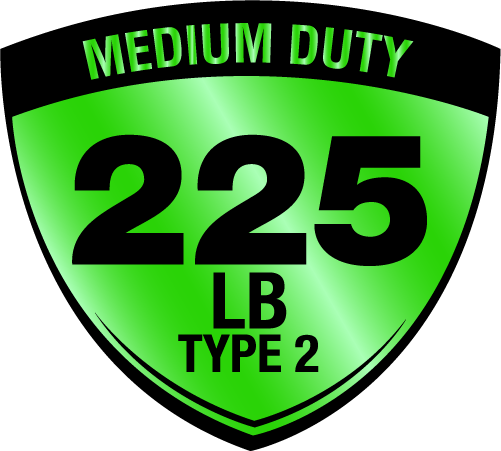
Type II, Medium Duty, 225lbs.
Suitable for commercial use, medium duty, capable of supporting 225lbs. Uses: Light commercial and general repair, painting, and cleaning.
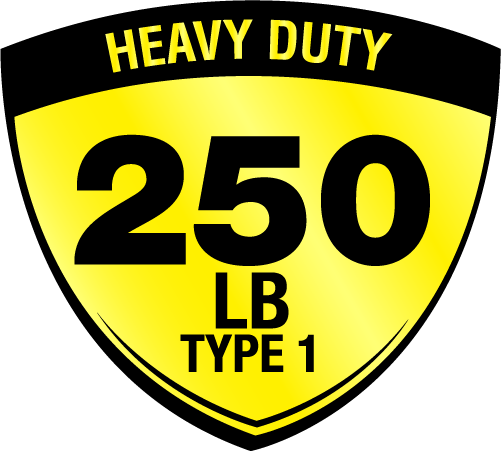
Type I, Heavy Duty, 250lbs.
Suitable for industrial use, heavy duty, capable of supporting 250lbs. Uses: Building maintenance, general contracting, and sheet rock.
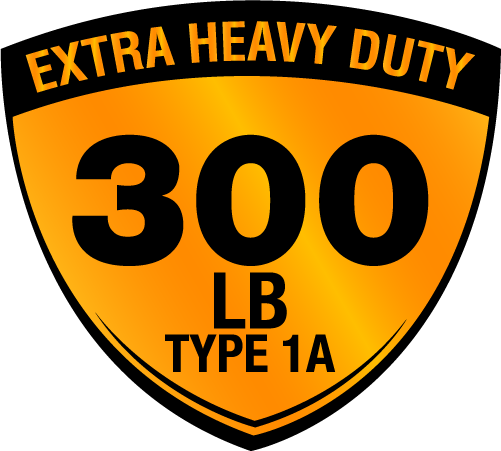
Type IA, Extra-Heavy Duty, 300lbs.
Suitable for professional use, extra-heavy duty, capable of supporting 300lbs. Uses: Building maintenance, contracting, and industrial construction.

Type IAA, Super-Heavy Duty, 375lbs.
Suitable for professional use, super-heavy duty, capable of supporting 375lbs. Uses: MRO and industrial construction.
STEP 4
SELECT A HEIGHT
The last step in selecting your perfect ladder is choosing the right height. Selecting a ladder height appropriate for your task takes careful consideration. Use these charts below to determine if a particular ladder size will allow you the reach to get the job done.
Step Ladder Heights
When using a step ladder, the highest permitted standing level is two steps down from the top. Any higher, and a person risks losing their balance and falling. As a rule of thumb, the maximum safe reach for an average height person is usually 3’ to 4’ over the ladder size.
| Ladder Size | Approx. Highest Standing Level | Maximum Reach* |
|---|---|---|
| 4' | 1' 11" | 8' 6" |
| 5' | 2' 10" | 9' 5" |
| 6' | 3' 9" | 10' 4" |
| 7' | 4' 9" | 11' 4" |
| 8' | 5' 8" | 12' 3" |
| 10' | 7' 7" | 14' 2" |
| 12' | 9' 6" | 16' 1" |
| 14' | 11' 5" | 18' |
| 16' | 13' 4" | 19' 11" |
| 18' | 15' 3" | 21' 10" |
| 20' | 17' 2" | 23' 9" |
Extension/Straight Ladder Heights
When using an extension ladder, the highest permitted standing level is four rungs down from the top. The extension ladder you choose should be 7’ to 10’ longer than the highest support or contact point for your project—which could be the wall or roofline. This allows for the proper setup, section overlap, and the highest standing height.
| Ladder Size | Maximum Extended Level | Maximum Reach* | Working Range To Top Support | Maximum Accessible Roof Height Range |
|---|---|---|---|---|
| 16' | 13' | 15' 11" | 7 1/2’ – 12 1/2’ | 4 1/2’–9 1/2’ |
| 20' | 17' | 18' 10" | 9 1/2’ – 16 1/2’ | 6 1/2’–13 1/2’ |
| 24' | 21' | 23' 8" | 11 1/2’ – 20’ | 8 1/2’–17’ |
| 28' | 25' | 27' 7" | 13 1/2’ – 24’ | 10 1/2’–21’ |
| 32' | 29' | 31' 5" | 15 1/2’– 28’ | 12 1/2’–25’ |
| 36' | 32' | 34' 4" | 17 1/2’ – 31’ | 14’–28’ |
| 40' | 35' | 37' 3" | 19’ – 33 1/2’ | 16’–30 1/2’ |
| 44' | 39' | 41' 1" | 21’ – 37 1/2’ | 18’–34 1/2’ |
| 48' | 43' | 45' | 23’ – 41 1/2’ | 20’–38 1/2’ |
| 60'** | 48' | 49' 10" | 23’ – 46 1/2’ | 20’–43 1/2’ |

